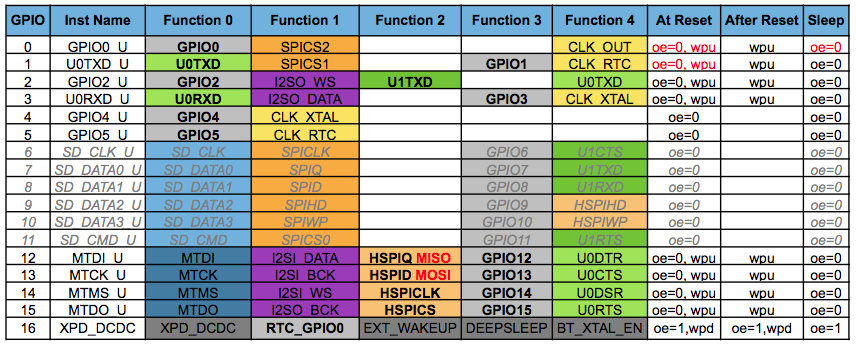Been trying to get an ESP8266 working with my Arduino Nano for weeks, but I think I bust it already.
To start with I wired CH_PD, RST, VCC to an external 3.3V supply, GND to GND, and RX directly to the Arduino's RX and TX to TX. (I understand that the ESP8266 RX and TX are 5V tolerant.)
With the terminal monitor set to 11500 baud I could sent AT commands.
The next step was to use software serial to send AT commands and print the response to the terminal.
However, 11500 is too fast for software serial so I sent
> AT+IPR=9600
and my simple setup sending AT commands continued to work, now at 9600 baud.
I had
> AT+IPR=9600
in my setup() for a while before I read that the board doesn't reset to 11500 when power cycled, and I was trying to get it to work with software serial.
Then it all stopped working, not even the simple setup I started with.
The blue TX LED on the ESP8266 comes on solid.
Have I bust it?
What did I do wrong?
Can it be fixed or is it junk?
Related: viewtopic.php?f=160&t=16787
Ta,
Richard.
